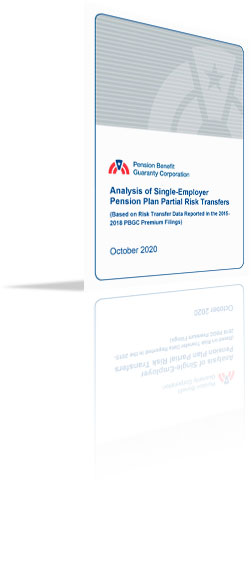The BCG Pension Insider
October 2020 – Volume 108, Edition 1
Low Interest Rates and Annuity Placements
Interest rates for annuity placements (AKA carve-outs, buy-outs) follow corporate bond rates very closely. Corporate bond rates are currently very low. The FTSE Pension Liability Index currently shows a rate well under 3%, whereas rates in the 5-6 percent range were the norm less than 10 years ago. If rates were to return to their levels from a decade ago, annuity pricing would be better by 30 percent or more. So the solution is obvious, right? Wait for interest rates to rise before considering purchasing annuities.
No! Waiting for a rise in rates is not the solution. That was a common approach back in 2012, when rates were in the low 4’s. Conventional wisdom was that rates had to bounce back up to the 5-6 range before too long. But rates have not topped 5% since then. And along the way, many sponsors have thought rates couldn’t go any lower, only to see nosedive after nosedive. Could rates bounce back – maybe not above 5% but at least to 4% (or close to that)? Sure, but they could also fall again, or stay stagnant for years (or decades).
But let’s assume that rates will increase. For plan sponsors that have opted to wait for a jump in rates, this is the scenario they’re banking on. What will happen to the plan’s assets as interest rates rise? For the equities in the plan, we really can’t say whether the returns will be good or bad. But for fixed income investments, the returns in a rising interest rate environment will be poor, more or less matching any savings that would be gained on an annuity placement.
Example: Fully funded plan, with $100M of assets and $100M of annuities (measured on an “annuity purchase” basis).
| Liabilities | Assets | ||
|---|---|---|---|
| Retirees | 40 | Fixed Income | 40 |
| TVs | 30 | Equities | 60 |
| Actives | 30 | ||
| Total | 100 | Total | 100 |
If rates were suddenly higher by 1% (100 basis points, or bps, e.g. jumping from ~3% to 4%), here’s what the result would be:
| Liabilities | Assets | ||
|---|---|---|---|
| Retirees | 36 | Fixed Income | 36 |
| TVs | 26 | Equities | 60 |
| Actives | 25 | ||
| Total | 87 | Total | 96 |
The plan goes from being fully funded to being overfunded. Great, exactly what you’d hope for with rising interest rates. But look at the retirees compared to the fixed income. They’re still the same. The plan went from having $40M or each to having $36M of each. Rising rates didn’t help this portion of the plan at all.
In this example, the fixed income assets line up perfectly with the retiree liability ($40M of each). Annuities could be purchased for all of these retirees, and the plan could continue on with 100% of assets invested in equities, and a much smaller plan. While the 100% equity allocation sounds risky, the risk has actually been reduced, because the plan is now much smaller. In practice, there are other factors to consider (e.g. impact on minimum funding or accounting) – but the underlying point remains: As long as there is fixed income in your plan’s portfolio, today’s low interest rate environment should not be factor that prevents you from moving ahead with an annuity purchase.
PBGC Analysis of Single-Employer Partial Pension Risk Transfers

The PBGC study reviews partial risk transfer data reported by single-employer pension plans to PBGC on premium filings for 2015 - 2018. The study analyzes partial risk transfer activities and summarizes this information by year, plan size, industry, and whether or not the plan is frozen for benefit accruals or participation.
ANNUITY PURCHASE RATES
Sample Interest Rates for a Pension Annuity Buyout
(Assumes no lump sums, disability, or unusual provisions)
Retirees (duration of 7) – 1.48%
Term Vesteds (duration of 10) – 1.66%
Actives (duration of 15) – 1.78%
Annuity Purchase Rates as of October 1, 2020